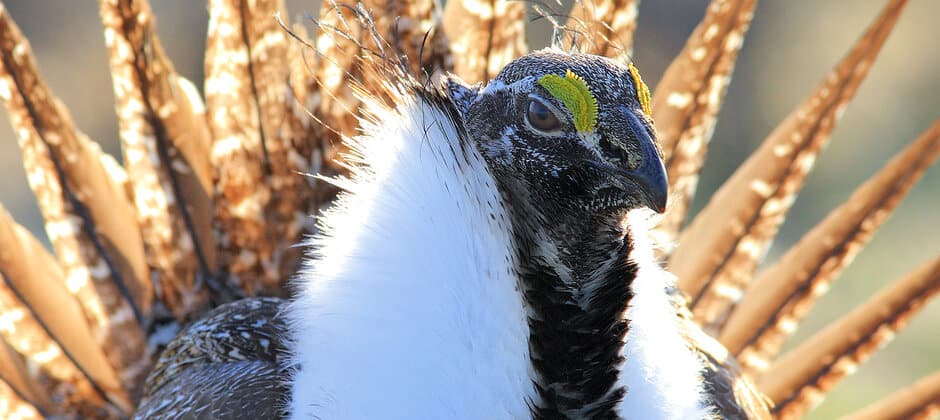Share this article
BLM considers updating sage-grouse management plans
The U.S. Bureau of Land Management is gathering new information and reviewing recent science on greater sage-grouse as it considers updating management plans for the species.
The agency announced its intention earlier this year to review the current greater sage-grouse (Centrocercus urophasianus) management plans that were put in place in 2015 and amended in 2019. More than 70 resource management plans guide sage-grouse habitat conservation and restoration on 67 million acres of BLM land in 10 western states.
In its Federal Register announcement last week, the BLM acknowledged that the current management plans “are potentially inconsistent with new science and rapid changes affecting the BLM’s management of the public lands, including the effects of climate change,” such as drought, loss of habitat and riparian areas, and more frequent wildland fires.
“The 2015 plans established a solid foundation, but actions during the previous administration kept those plans from being put into action,” said BLM Director Tracy Stone-Manning in a press release. “As we move to build upon the earlier plans, we are asking whether there are other steps we should take given new science to improve outcomes for sage-grouse and also for people in communities across the west who rely on a healthy sagebrush steppe.”
In 2015, the Obama administration amended 98 resource management plans covering 70 million acres of sage-grouse habitat on both BLM and U.S. Forest Service lands in 11 western states. Those plans identified 10 million acres of specific “sagebrush focal areas” intended to label key \ sage-grouse habitat. Developed in coordination with states and other stakeholders, these amendments were successful in helping to alleviate the need to list the sage-grouse under the Endangered Species Act. In late 2015, the USFWS decided not to list the species.
In 2019, the Trump administration revised these plans, withdrawing the land use restrictions designated by focal areas, and increasing flexibility for the BLM to permit oil and gas drilling and other activities on public lands previously designated as sage-grouse habitat. Those revisions were challenged in court and overturned in late 2019.
Separately, the BLM is also developing an Environmental Impact Statement reconsidering its 2015 proposal to withdraw 10 million acres of sage grouse habitat in “sagebrush focal areas” from new mining claims. The proposal was withdrawn in 2019.
The BLM will accept public scoping comments through Feb. 7.
Header Image:
The Bureau of Land Management is considering updating its sage-grouse management plans.
Credit: Doug Dance/USFWS








